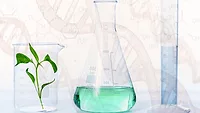International Regulations on Genetically Modified Organisms: U.S., Europe, China and Japan

Fifteen years ago, a survey conducted on college students compared consumer acceptance of genetically modified organisms (GMOs) in Japan, Norway, Taiwan and the U.S., concluding that Americans were more willing to consume foods containing GMOs than were their international counterparts. Most survey participants would have liked to have mandatory labeling of GMOs and were willing to pay extra for non-GMO food.[1] Since the regulation of GMOs was first established in the early 1990s globally, countries have gone through initial formation, gradual modification and evolution of their own rules. Below is an overview of GMO regulations in the U.S., European Union (EU), China and Japan, a topic that is regularly debated by politicians, consumers, media and scientists.
U.S.: Mandatory-Labeling Voices Are Rising
On March 16, 2016, the U.S. Senate blocked a bill to nullify the mandatory labeling of GMOs at the state or local level, indicating that the debate on whether to label GMOs voluntarily or mandatorily had not ended yet.[2] Several states required mandatory labeling of GMOs before this bill, including Vermont, Connecticut, Maine and others. Vermont passed its legislation 2 years ago, and mandatory labeling is set to go into effect this summer. Connecticut passed legislation on mandatory labeling of infant formula containing GMOs in 2013, Maine approved legislation of mandatory labeling on foods containing 0.9 percent GMOs[3] and several other states have also expressed interest in implementing mandatory GMO labeling.[4]
American consumers have been increasingly expressing their concerns and demanding mandatory GMO labeling. Throughout 2015, the U.S. has been driving the launches of GMO-free claims worldwide; the U.S. accounted for 43 percent of global launches, even ahead of the EU at 4 percent. While in the EU, GMO labeling is mandatory, in the U.S., it is currently voluntary. In the past, there has been limited consumer resistance to GMOs in the U.S. But recently, dairy companies, as well as nondairy drink manufacturers using plant-source protein, have been expressing strong interest in non-GMO labeling because for those more “natural” brands, their identity as “natural” and organic is usually closely linked with GMO-free certification.[5]
According to the Grocery Manufacturers Association, 70–80 percent of processed food that Americans consume daily contains genetically engineered plants. A survey with 1,000 participants in 2014 concluded that 63 percent of Americans support the U.S. Food and Drug Administration’s current policy of voluntary labeling on GMOs, consistent with prior survey results. If GMO labeling becomes mandatory, as is the current situation in the EU, Japan and New Zealand, the U.S. food industry would be hugely impacted; most foods with GMOs may have to be eliminated from the shelf due to consumer aversions. Because non-GMO ingredients are more expensive than their genetically modified counterparts, companies switching to non-GMO ingredients would increase the prices of these food products, which would eventually result in rising food costs for consumers.[3]
EU: Currently and Historically Restrictive
Unlike the U.S., a major exporter of GMOs and leader in the biotechnology field, Europe remains conservative on GMOs. GMOs in the EU are regulated at two authoritative levels: The European Commission (EC) and European Food Safety Authority issue harmonized rules on GMOs; EU member states have individual rules and regulatory agencies within their territory. Companies hoping to sell and market their GMO-containing foods in a certain European country must apply for approval at the country level first; if approved, the company can proceed by notifying other countries via the EC. If there is any objection from other member states, additional evaluations will be conducted by the EC. A draft proposal is then submitted from the EC and voted on by representatives from EU member states. If vetoed, the proposal must be submitted to the EC for another round of votes.[6]
The EU’s cautionary attitude on GMOs is due to several different economic, political and societal reasons. Economically, limiting the sale of GMOs protects domestic agricultural business by setting a higher trade barrier for large GMO exporters. In European politics, environmental and often “anti-GMO” groups have been taking a larger role in policymaking at regional, state or even European levels. Finally, the rising consumer demand for “natural” or “organic,” which is often manipulated by social media, has led to a culture of distrust of GMOs. Some environmental groups and lobbies are reported to be active in attacking GMOs, trying to protect their own claims of being “natural” and “healthy.” Politicians, like those who passed a bill to ban foods directly containing GMOs from school lunches in Taiwan,[7] are often very sensitive to the opinions of their electorates. They carefully avoid any public rejections of these controversial issues, trying to stay aligned with their electorates for the benefit of their political careers. The impact of the EU’s restrictive policy on GMOs not only increases costs for manufacturers but also delays the development of modern biotechnology. Further, other countries considering the EU as a potential export market must wait and see, hoping to mirror policies from these large countries/regions with whom they heavily trade. Some of these “wait-and-see” countries choose to follow the EU as a model, whereas others may choose to mirror the U.S., a representative of a GMO “soft”-regulating country, to maximize benefits from exporting their crops.[8]
China: Tightening Rules, but Implementation Is Uncertain
With the passing and implementation of the updated Food Safety Law in October 2015, China will now probably be clustered on the stricter side of GMO labeling. The new law in China specifically includes an article on GM food that requires mandatory GMO labeling. Those who violate the labeling requirements will be punished with fines or even suspension of their license. However, specific rules on how to label GMOs with regard to the font size and other detailed requirements have still not been announced. China is also well aware of the variances in other countries on GMO labeling: The U.S. represents countries requiring only voluntary labeling; most European countries require mandatory labeling once the GMOs exceed a certain threshold in a product; Japan requires mandatory labeling only on certain processed foods.[9]
Surveys conducted from 2007 to 2008, and in 2010, showed that the majority of Chinese consumers are not opposed to purchasing GM foods. Most Chinese people have heard about GMOs, but consumer awareness is not high. Consumers with higher income or greater knowledge of GMOs are more willing to purchase them.[10] However, in one specific case in Hunan, China, in 2012, fearmongering, rather than scientific media coverage of a Golden Rice experiment, fueled a long-lasting debate about GMO safety in China and resulted in unnecessary worries, concerns and even fear among Chinese consumers.[11]
China’s GMO regulations dates back to the early 1990s, covering each process of genetic engineering from research and development to premarket testing of the use of GM products. By the end of 2000, China had approved about three-fourths of the 443 applications for the biosafety review of GMOs from research institutes and producers of GMOs. In 2002, China started to require that all food products containing GMOs receive a safety assessment and go through an approval process, in addition to being labeled accordingly. However, these labeling requirements were not fully executed, and there was criticism from Chinese academic researchers in the early 2000s regarding the loopholes in the GMO laws and regulations that were not well coordinated between different authoritative agencies.[12] With the increasing need for GMO regulation brought by biotechnology development and rising consumer demands for mandatory labeling, China made the aforementioned updates to its GMO regulations in October 2015. However, it remains unknown whether and how these updates will be implemented. Meanwhile, there is also a need for the Chinese government to better communicate with consumers and the media so that the public will be better informed and educated about the science on such controversial issues.
Japan: A Pragmatic Approach to GMOs
In Japan, GMOs in food are regulated under the Cartagena Protocol.[13] The Japanese government divides GMO regulation authorities into different units. For all GMOs, whether in food, animal feed or other products, the Ministry of Education, Culture, Sports, Science and Technology oversees experimental trials in laboratories for R&D purposes. The Ministry of Agriculture, Forestry and Fisheries (MAFF) and the Ministry of Environment are responsible for assessing environmental safety and impacts on biodiversity caused by GMO cultivation. The Ministry of Health, Labor and Welfare (MHLW) assesses the safety of GMOs in foods, whereas MAFF assesses the safety of GMOs in animal feed. After a GMO application is submitted to MHLW (for food) or MAFF (for animal feed), the relevant ministry requests evaluations from the Cabinet Office, the Food Safety Commission and the investigation group for the GMO. After evaluations are completed, results are announced so that the public can exchange information with the authorities.[14]
GMO labeling in Japan depends on whether the food directly contains GMOs. If GMOs are present in the final product, GM content to be labeled exceeds 5 percent15 of total weight, and if a GM ingredient is among the top three ingredients, then labeling is mandatory. Phrases such as “genetically modified” or “genetically modified organisms not segregated” must be used. Otherwise, for foods not preserving DNA characteristics of the original crop after processing, or other qualified foods, it is voluntary if they want to be labeled as “not genetically modified.”[15]
Compared with the EU and U.S., Japan seems to take a more middle-of-the-road stance on GMOs. The number of GMO approvals in Japan falls short of the U.S. mark but is ahead of the EU’s. The comparison is the same for the approval time frame of the GMO crops applying to be sold in these countries: U.S. approval is the fastest, followed by Japan and then the EU.[14]
Conclusion
Worldwide, countries have established GMO regulations based on their own economic, political and societal reasons. Vigani et al.[16] established a GMO index to score different countries and show country-by-country restrictiveness of GMO regulation. The score is generated from six main parameters of GMO regulation: approval process, risk assessment, labeling, traceability, coexistence and membership in international agreements. The EU and Japan lean toward the more rigorous side for GMO regulation, whereas the U.S. represents the less-preventive side of the scale. There is also a third group of countries that weigh the benefits of GMOs (lower production costs) and the risk of losing export markets restrictive to GMOs. Countries with very dissimilar GMO regulations trade significantly less. The authors of the index urge a harmonized approach for the convenience of business and reduction of costs spent to comply with regulations in bilateral trade.[17]
Wendan Wang, Ph.D., is an associate scientist at Burdock Group, a food safety consulting firm headquartered in Orlando, FL.
References
1. Chern, WS and K Rickertsen. 2001. “Consumer Acceptance of GMO: Survey Results from Japan, Norway, Taiwan, and the United States.” Taiwan Agric Econ Rev 7(1):1–28.
2. www.reuters.com/article/ususagmolabelingidUSKCN0WI2K2.
3. Hemphill, TA and S Banerjee. 2014. “Mandatory Food Labeling for GMOs.” Regulation 2014–2015:7–10.
4. bigstory.ap.org/article/b57fd671c46d4598abb14046b14c2441/bill-block-state-labeling-genetically-modified-foods.
5. www.nutraceuticalsworld.com/issues/2015-12/view_breaking-news/us-demand-leads-the-way-for-gmo-free-labeling/.
6. Han, Y et al. 2013. “Evolution of GMO Regulations in the European Union and Indications for China.” Zhejiang Agric Sci 11:1482–1489.
7. www.foodnavigator-asia.com/Formulation/Unraveling-the-reasons-behind-Taiwan-s-ban-on-GMOs-in-school-meals.
8. Cantley, M. 2012. “European Attitudes on the Regulation of Modern Biotechnology and Their Consequences.” GM Crops Food 3(1):40–47.
9. news.sohu.com/20151109/n425680807.shtml.
10. Han, F et al. 2015. “Attitudes in China about Crops and Foods Developed by Biotechnology.” PLoS One 10(9):e0139114.
11. Yang, J et al. 2014. “The Rejection of Science Frames in the News Coverage of the Golden Rice Experiment in Hunan, China.” Health Risk Soc 16(4):339–354.
12. Yang, W. 2003. “Regulation of Genetically Modified Organisms in China.” Rev Eur Commun Internat Environ Law 12(1):99–108.
13. Effective since 2003, The Cartagena Protocol on Biosafety to the Convention on Biological Diversity is an international agreement on biosafety as a supplement to the Convention on Biological Diversity. It aims to protect biological diversity from the potential risks posed by GMOs. As of March 2015, the protocol had 170 parties, including 167 United Nations member states and the EU.
14. Ebata, A et al. 2013. “For the Approval Process of GMOs: The Japanese Case.” AgBioForum 16(2):140–160.
15. Five percent is also set as an impurity level allowed for foods accidentally mixed with GMOs to be exempt from labeling.
16. Vigani, M et al. 2012. “International Trade and Endogenous Standards: The Case of GMO Regulations.” World Trade Rev 11(3):415–437.
17. Vigani, M and A Olper. 2015. “Patterns and Determinants of GMO Regulations: An Overview of Recent Evidence.”
AgBioForum18(1):44–54.
Looking for quick answers on food safety topics?
Try Ask FSM, our new smart AI search tool.
Ask FSM →








